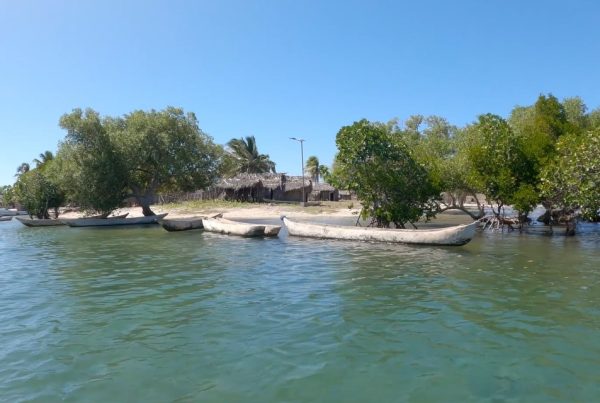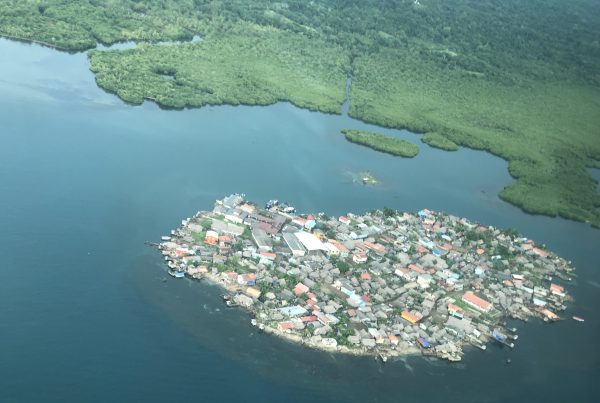Bikin National Park, an area of 1,160,469 hectares in the Far East of the Russian Federation, is the largest protected virgin forest in Eurasia’s pre-temperate zone. The park was created in 2015 1 with objectives not only to preserve and restore the habitats of wild animals and rare species (such as the Amur tiger), but also to protect the forest culture of the indigenous peoples of this territory—the Udege and the Nanai.
As a result of collaboration among indigenous peoples, federal, regional and local authorities, and representatives of environmental and scientific organisations during the long process leading up to the creation of the national park, most of the proposals developed to guarantee the rights and interests of the territory’s indigenous peoples were included in the title documents of the park. 2
The uniqueness of Bikin lies in its co-management by the indigenous peoples living inside the park and research staff, based on a combination of traditional knowledge, practices and rituals, and new technologies. To this end, a permanent Indigenous Council has been established,3 which guarantees the participation of indigenous peoples in decisions on protecting nature and wild species, and coordinates programs and projects that may affect their traditional way of life. The council also develops guidance on norms and behaviour for local communities and monitors the preservation and use of traditional knowledge.4 The council’s chairman is the deputy director of the park.
The regulations developed to manage the park include clear delineation of zones; 70 per cent of the total area is zoned for the traditional management of nature for indigenous people living inside the park and no reduction of this area is possible. All local residents retain the right to visit the park freely, wherever they live, and indigenous hunters can carry out traditional economic activities free of charge in their historical hunting grounds and dispose of the products at their own discretion.
Of the 114 people who work in the park, 70 are indigenous.5 Indigenous park employees carry out tasks related to protecting and controlling the territory and to community-based monitoring, which makes use of traditional knowledge, practices and rituals together with new technologies and information systems. Researchers and representatives of environmental organisations such as WWF are helping to educate indigenous people about modern environmental protection technologies (such as camera traps, modern navigation devices, and unmanned aerial vehicles or drones). The development of ecotourism and education is also encouraging co-management of the park.
On 2 July 2018, the World Heritage Committee declared the park a part of the Central Sikhote-Alin UNESCO World Heritage site, confirming the uniqueness of this region. Bikin National Park is the first protected area in Russia with a goal to protect the habitat and traditional way of life of indigenous peoples, as well as their involvement in the management of the park.
Created in 2015, Bikin National Park is is the largest protected virgin forest in Eurasia’s pre-temperate zone. Credit: Dilbara Sharipova
Author
- Polina Shulbaeva, Center for Support of Indigenous Peoples of the North
Ecosystems
- Boreal forests
Topics
- Conservation and sustainable use
- Knowledge, culture and spirituality
- Governance
Type
- Short-form
Date
- This case study forms part of LBO-2, originally released in 2020.
References
- Russian Federation (2015) ‘Decree of the Government of the Russian Federation November 3 2015 No. 1187, On the establishment of the Bikin National Park’. Moscow: Russian Federation.
- Bikin National Park (n.d.) ‘About Bikin National Park’. Available at: http://parkbikin.com
- BROC (2018) Problems of nature management of the Far East and Siberia. Bikin: From the operational forest to UNESCO World Heritage. Vladivostok: BROC. Available at: http://ngo-broc.org/wp-content/uploads/2018/11/Bikin-%D1%81%D0%BF%D0%B5%D1%86%D0%B2%D1%8B%D0%BF%D1%83%D1%81%D0%BA-%D0%AD%D0%B8%D0%91-2018.pdf
- Russian Training Center for Indigenous Peoples (2016) Strategic Development Plan for the Bikin River Basin in collaboration with the national park. Moscow: Russian Training Center for Indigenous Peoples. Available at: http://www.csipn.ru/images/stories/documents/Bikin_strategy.compressed.pdf
- Bikin National Park (n.d.) Report on work done by the Federal State Budgetary Institution. Bikin National Park. Available at: http://parkbikin.com/netcat_files/17/119/h_897547bc047c83359a726bf81e55fb65



